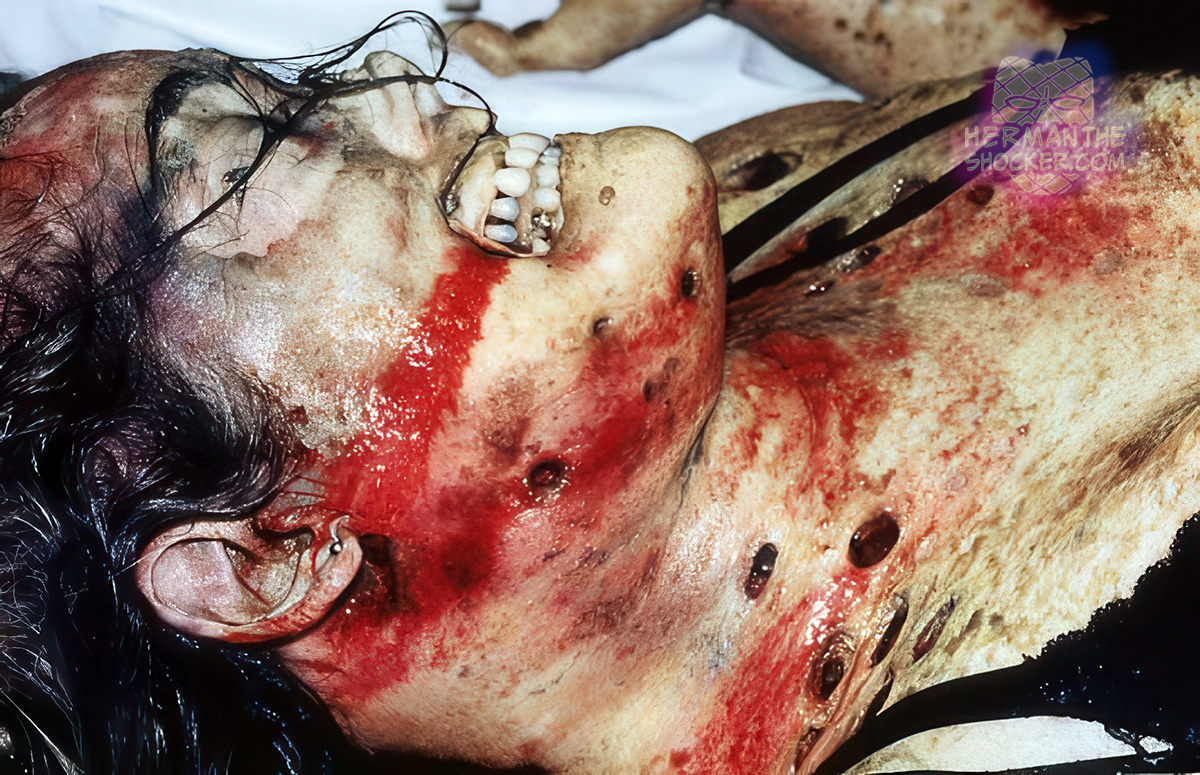Oval to round cutaneous defects caused by crustaceans postmortem on the neck and upper trunk in a drowning victim. Such injuries should not be confused with stab wounds or gunshot holes. In drowning victims or persons whose death led to their deposition in water or when a body has been dumped in an aquatic environment, postmortem artifacts on the body surface due to aquatic living structures are often observed, too, and should not be confused with vitally acquired injuries.
Bodies that are found in the sea will often be decomposed and injured by the action of waves against obstructions or by marine predators, and blood may be washed out of the wounds. These changes may complicate the evaluation of cases. In deep waters such as ocean and sea, many small fish species feed on corpses. The best-known scavengers that feed on corpses in deep waters are sharks.
Animal predation, including insect activity, is very different in the water environment. In some cases, the body will be floating on the surface and the usual arthropod predators such as blowflies and carrion beetles will have access to exposed tissue. The immersed portion of the body will be subject to different predators. Aquatic insects may alter the appearance and condition of the remains.
Large animals such as turtles, large fish, and large crustaceans will cause tissue damage that in some cases may mimic trauma to the body. Smaller fishes, crabs, shrimp, and invertebrates prey on soft tissue and if given the opportunity can completely deflesh exposed parts of the body. Fish, turtles, and other animals may aggressively feed on remains and in the ocean environment, large carnivores such as sharks will create postmortem artifacts. It is not unusual for small fish and crustaceans to gain access to the interior of the body through skin and soft tissue defects or even normal body orifices.
Crustaceans are a very diverse group of invertebrate animals which includes active animals such as the crabs, lobsters, shrimp, krill, copepods, amphipods, and more sessile creatures like barnacles. Arthropoda is the largest phylum of Animal Kingdom. It includes about 11,340,000 species in all habitats.
Latest posts








